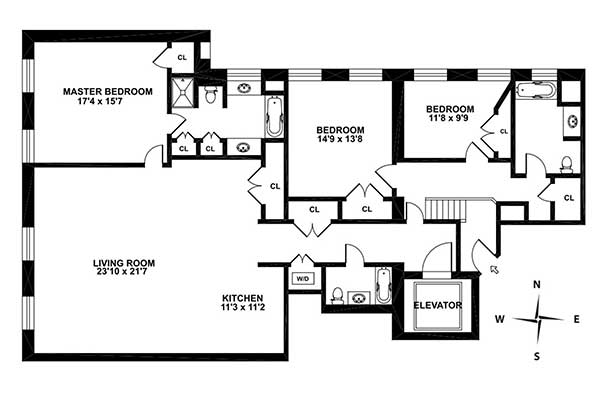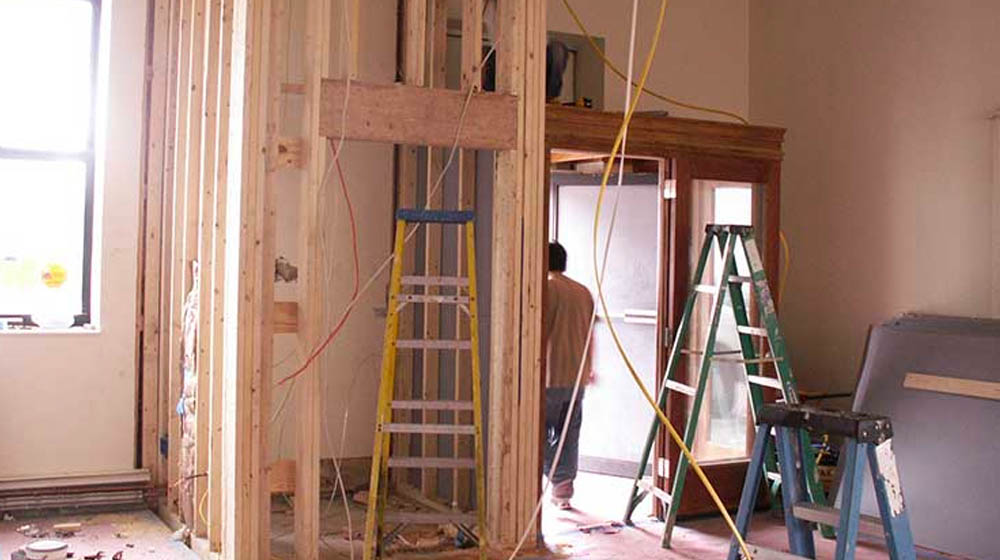If you’re considering a home elevator to make your home more accessible and aging-in-place ready, you have more options to choose from than ever before. Before you decide which type you want, think about the space you have available for installation. That information will come in handy as you work with your local home elevator company to decide which type of elevator to install.
Installation Depends on the Type of Home Elevator
Home elevator installation greatly depends on the type of home elevator you purchase. The three most common types of home elevator include:
-
Hydraulic or cable elevator: When most people think of elevators, they think of the kind that is concealed in a wall, with a door that retracts into the wall to allow you to enter. There are two types of elevators that work like this: traditional cable (or traction) elevators, and hydraulic elevators. The two types look similar, but a hydraulic elevator operates using a fluid-driven piston while the cable elevator uses electricity and relies on a pulley system to move. Cable elevators are less common in newer construction as most people prefer hydraulic technology. Hydraulic and cable elevators are usually the most attractive option.
-
Pneumatic vacuum elevators: Newer types of elevators, including the pneumatic vacuum and the shaftless elevator, are more affordable because they are installed out in the open and don’t require demolition. Pneumatic systems consist of glass or acrylic tubes (typically around 30 inches in diameter) that look a bit like large mail tubes you may have seen in older buildings. They are not concealed in the wall and are usually positioned next to an existing staircase.
-
Shaftless elevators: Shaftless elevators consist of a rectangular elevator car positioned on a track. The car travels on the track from the lower floor to the upper floor and back. These elevators are often not as attractive as other options, but they are more affordable.
New Construction vs. Retrofitting for Home Elevator Install

If you are building a new home, you will have the most options for installation. You can choose the most convenient or attractive location for your elevator and determine how big you want it to be by allowing more or less space to accommodate the elevator shaft. The easiest and most affordable time to install any behind-the-wall elevator, including a traditional cable design or a hydraulic elevator, is during a new construction build.
If you are planning to retrofit your existing home with an elevator, your most affordable options are the pneumatic vacuum or shaftless elevators. They both take up little space and can be added nearly anywhere in the home. Pneumatic vacuums are often installed next to an existing staircase, but both the pneumatic and the shaftless types can be put nearly anywhere by creating a hole in the floor of the second story. However, if you have the budget and space, it is possible to retrofit a home with a hydraulic or cable elevator.
Dimensions Needed to Install a Home Elevator
Most states have residential building codes requiring home elevators to be 18 square feet or less. That’s enough to accommodate an elevator that is 3 feet wide and 6 feet deep, for example, which is quite a bit bigger than what you’ll need unless you have a very large home and want an elevator that transports several people at once.
-
Cable or hydraulic elevators: Standard sizes for traditional cable or hydraulic elevators range from 12 square feet to 15 square feet, or larger for custom elevators. To install a hydraulic or cable elevator, which is built into your home and concealed behind a door or bookcase, you’ll need at least a five square foot area of your home that can be blocked off.
-
Pneumatic vacuum elevators: A pneumatic vacuum elevator may be a good option if you have less space. They require about 3 feet by 4 feet (12 square feet) to accommodate one person in a wheelchair and are usually positioned next to an existing staircase.
-
Shaftless elevators: Another elevator option requiring little space is the shaftless option. A larger shaftless elevator meant to accommodate a wheelchair or two people usually requires 14 square feet of space.
Home Elevator Installation Cost
Home elevators can be expensive to install. The total cost of purchasing the elevator itself, installation, and necessary safety features like railings ranges from around $20,000 to $100,000. The installation adds about $12,000 to $20,000 to the final cost. The type of elevator you choose, how many floors you need it to access, and whether you are building it into new construction or retrofitting your existing home will influence the installation cost. Another factor that can influence the installation cost of an elevator is your location in the country and your state; areas with higher demand typically have more affordable prices.
In general, purchasing and installing a standard hydraulic elevator for a two-story home averages around $45,000. A custom, behind-the-wall hydraulic elevator in a multi-story house can be as much as $75,000. Cable elevators are cheaper initially, typically around $25,000; but these can easily become much more expensive when it comes to installation depending on how much demolition and construction is required to install it in an existing space. Pneumatic elevators average around $40,000 to purchase and install. A shaftless elevator is the most affordable option averaging around $20,000 to purchase and install.
Bottom Line
The requirements to install an elevator in your home depend on the space you have available, the type of elevator you want, and whether you need to retrofit it into your existing home or build it into a new home. Contact your local home elevator company and ask about free estimates based on your particular situation.


